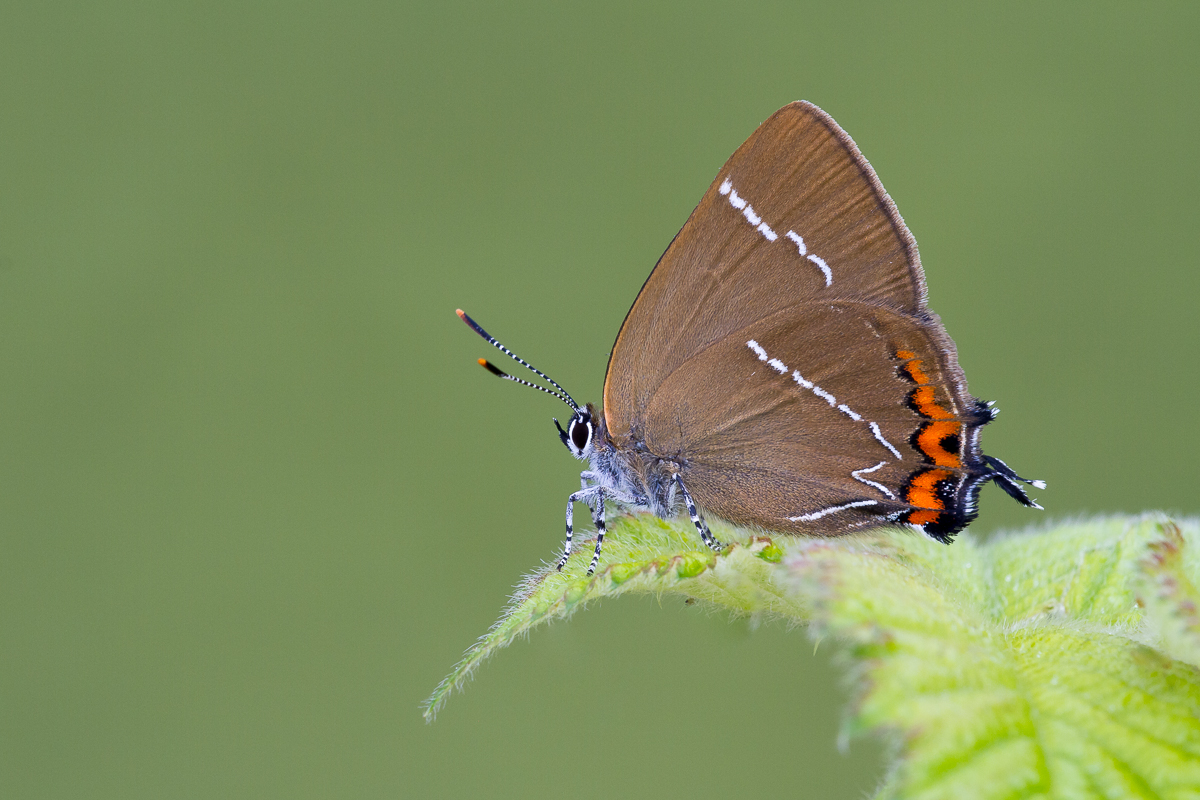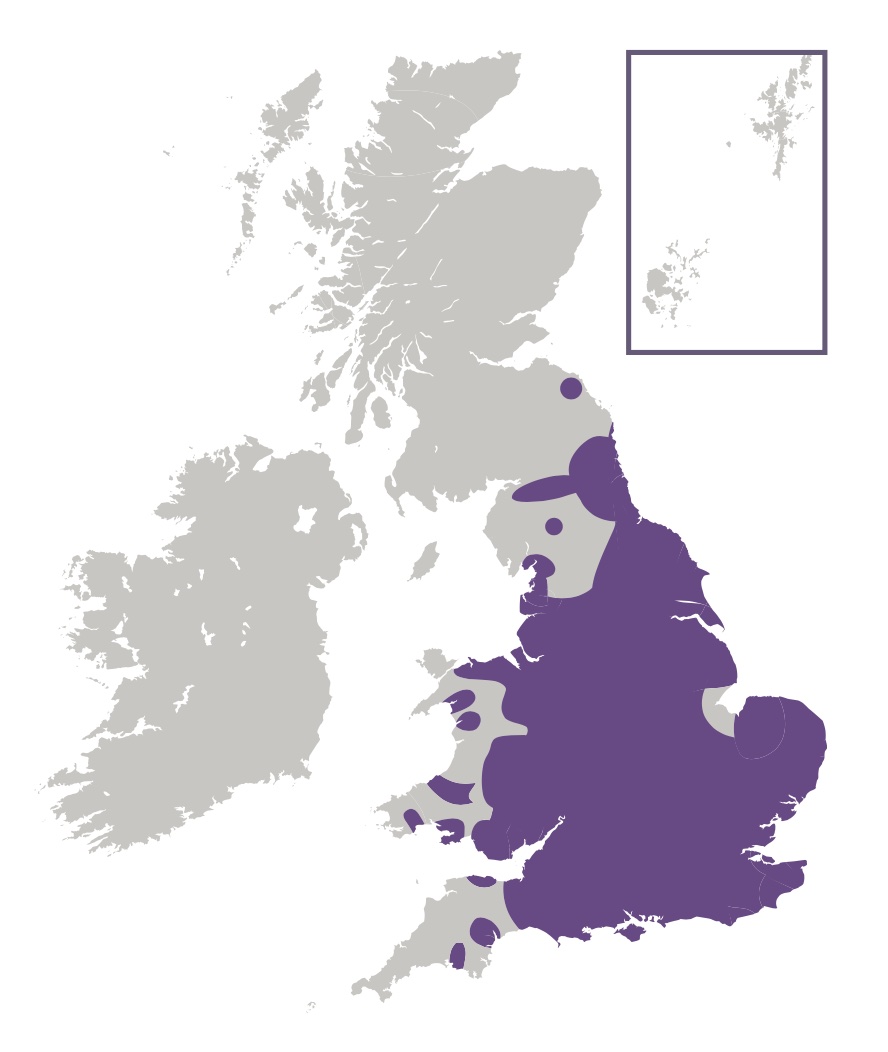
Photo © Peter Eeles
The White-letter Hairstreak is one of our more-elusive butterflies as it flits high in the treetops, often appearing as a dark speck against the sky. It gets its name from the letter "W" that is formed from a series of white lines found on the underside of the hindwings.
Elm is the sole foodplant and this species suffered as a result of Dutch elm disease in the 1970s and early 1980s, especially in southern sites. All species of elm were affected and there was concern that this species of butterfly might become extinct in the British Isles as a result. Surviving colonies were subsequently looked for, to obtain a better understanding of the distribution of this species. Several new colonies were found which gave new hope for the future of this butterfly. In addition, there has been a concerted effort to find disease-resistant elms that exhibit the appropriate qualities to support this butterfly (such as flowering at the right time of year since young larvae generally rely on flower buds as a food source).
This butterfly forms discrete colonies which are sometimes very small containing only a few dozen individuals. Colonies are typically focused on a small clump of trees or even an individual tree. These butterflies are not great wanderers and will reuse the same site year after year. This butterfly is found throughout England, south of a line stretching between South Lancashire in the west and South Northumberland in the east. This species is found more locally in Wales, and is not found in Scotland, Ireland or the Isle of Man.
The adult butterflies are best seen early in the morning or late in the afternoon, when they will come down from their treetop resting place to nectar on various flowers, Thistle, Bramble and Privet being favourites. Most of the time, however, they remain elusive as they feed on honeydew in the tree tops. Like the Black and Green Hairstreaks, the adults never settle with their wings open.
When egg-laying, the female exhibits the same behaviour of many other hairstreaks, slowly crawling along twigs of the foodplant looking for suitable places in which to deposit her eggs.

This butterfly is never found far from its larval foodplant of elm, Wych Elm being preferred. Flowering elms are usually essential for successful larval development and this therefore suggests a certain maturity of tree, although there is some evidence that this species has successfully used non-flowering elms on occasion. Favourite sites are elms on the edge of deciduous woodland, but this species can also be found in more open habitat such as roadside verges if suitable elms are present.
Adults feed primarily on Honeydew (N/A). brambles (Rubus spp.), Hemp-agrimony (Eupatorium cannabinum), ragworts (Jacobaea spp.), thistles (Carduus spp. and Cirsium spp.), umbellifers (Apiaceae spp.), Wild Marjoram (Origanum vulgare) and Wild Privet (Ligustrum vulgare) are also used.
The primary larval foodplants are English Elm (Ulmus procera), Small-leaved Elm (Ulmus minor ssp. minor) and Wych Elm (Ulmus glabra).
